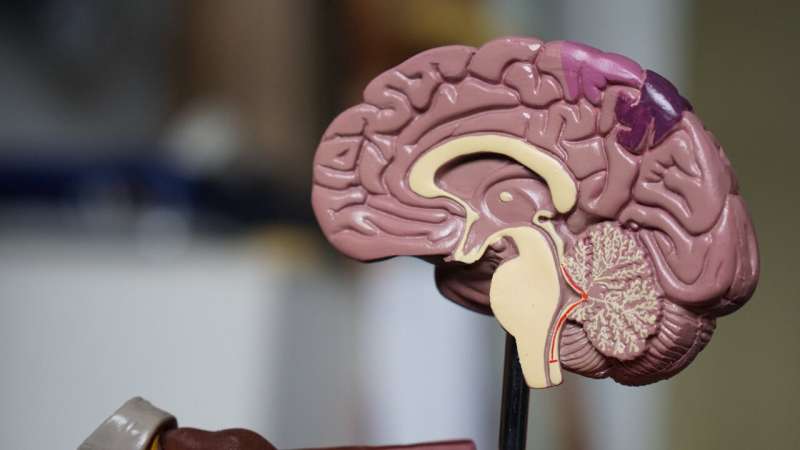New hope for people living with a genetic cause of autism

Fragile X syndrome, or FXS, a leading genetic cause of autism, affects around one in 4,000 males and one in 6,000 females. Its symptoms include increased anxiety, intellectual disability, repetitive behaviors, social communication deficits, and abnormal sensory processing. People living with FXS generally lack the fragile X mental retardation 1 gene, or Fmr1, in their brain cells. If their cells have this gene, it is silent and not producing a protein called FMRP.
Researchers at the University of California, Riverside, report in the journal Neurobiology of Disease they were able to ameliorate FXS symptoms after inserting Fmr1 into the brains of very young transgenic mice that had been genetically engineered to lack this gene. When the researchers measured brain activity for signs of anxiety and hyperactivity in response to stimuli such as stresses and sounds, they found that the reactivation of the Fmr1 gene in these mice had led them to no longer show FXS symptoms.
"Our work shows beneficial effects of reactivating the Fmr1 gene, which would be very welcome news for young children living with FXS," said Iryna M. Ethell, a professor of biomedical sciences in the UCR School of Medicine, who led the research.
In their study, Ethell's laboratory, in collaboration with Khaleel A. Razak, a professor of psychology, selected very young mice—less than 3 weeks old—because brains are most plastic early in life; the equivalent in humans is around the first 3–5 years.
"For humans, the first 3–5 years are critical in brain development," Ethell said. "It's important, therefore, that this early period be targeted in FXS."
The mouse brain, like the human brain, has excitatory and inhibitory neurons. Unlike excitatory neurons that lead to a forward propagation of information, inhibitory neurons work like a brake by suppressing unnecessary activity and tuning brain activity to specific signals.
Ethell and two colleagues recently published a review article in Nature Neuroscience showing that the dysfunction of inhibitory neurons is a common pathology in genetic diseases that are linked to autistic spectrum disorders, or ASD.
"In the current study, we targeted excitatory neurons in the second and third postnatal weeks of the mice to insert the Fmr1 gene," Ethell said. "Our study shows this period is not too late for manipulating the brain. We targeted these particular neurons because they establish a control over inhibitory neurons that are malfunctioning in FXS. At this time, we do not know if our method would be effective in adults. That research would be a next step in this line of work."
How Ethell and her team introduced the Fmr1 gene into mouse brain differs from how the gene would potentially be introduced in a human brain. The final outcome, however, would be the same, Ethell said. According to her, CRISPR, a powerful tool for editing genomes, would most likely be used to reactivate Fmr1 in human brain.
"FXS is most often diagnosed early in a person's life," she said. "We cannot stress enough, therefore, that the early years are the perfect time to reactivate the Fmr1 gene. It offers hope that even if this gene is missing in a child, it can still be introduced, allowing the child to live a daily life free of FXS. As gene reactivation to treat FXS receives increasing attention, our results suggest the benefits of Fmr1 re-expression during the early period of brain plasticity in mice, which roughly corresponds to the first three years of human life, when ASD symptoms first emerge in infancy."
Next, the research team will work to restore function in the adult FXS brain.
"The main challenge is that the adult brain is not so plastic," Ethell said. "Young brains can do just about anything. But as an adult, have you tried to learn a new language?"
The research paper is titled "Functional consequences of postnatal interventions in a mouse model of Fragile X syndrome."
More information: Maham Rais et al, Functional consequences of postnatal interventions in a mouse model of Fragile X syndrome, Neurobiology of Disease (2021). DOI: 10.1016/j.nbd.2021.105577





















